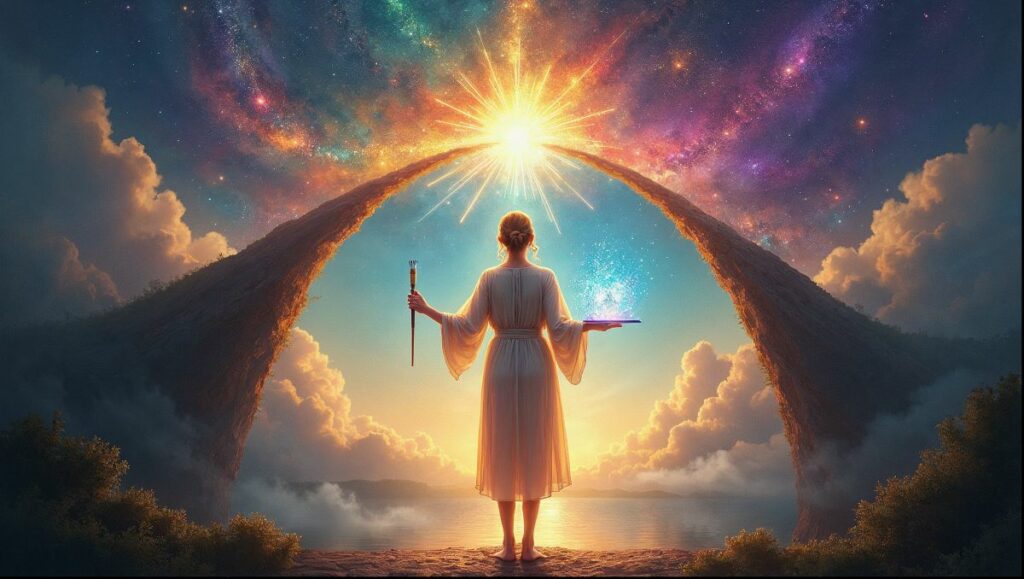
As we enter an era dominated by generative AI, artists face existential questions about their role in society. While AI can produce stunning visuals at incredible speed and negligible cost, I believe this technological revolution presents an opportunity for artists to rediscover their ancestral purpose: bridging the gap between the spiritual and physical realms.
Throughout history, artists have served as conduits for divine inspiration, translating the ineffable into tangible forms. This tradition stretches back to the very dawn of human creativity. The haunting cave paintings of Lascaux and Altamira, created over 17,000 years ago, weren’t mere decorations but gateways to the spirit world, imbued with shamanic power. The mysterious stone circles of Göbekli Tepe, dating back 12,000 years, represent perhaps the first monumental expression of spiritual art, predating writing itself. In ancient Egypt, every painted hieroglyph, every sculpted pharaoh, and every towering pyramid was a bridge between the mortal and divine realms, designed to ensure eternal life.
The awe-inspiring temples of ancient Greece, like the Parthenon atop the Acropolis, weren’t merely feats of architecture but physical manifestations of divine harmony. Roman statues weren’t just representations of emperors or gods, but channels through which the divine could be understood and revered. From prehistoric times to classical antiquity, art has been a means of celebrating and connecting with the spiritual world, a tradition that has shaped human consciousness for millennia.
While AI may replicate and even surpass human skill in technical execution, it lacks something fundamental: a spiritual connection to higher realms. No matter how advanced, an AI will never experience the divine inspiration that has driven artists throughout millennia. It cannot commune with what the ancients called Gods or what we might term higher forces.
As an artist, I find that my work is deeply influenced by these spiritual connections. The music I compose and the visuals I create are manifestations of something greater – a bridge between the seen and unseen worlds. This spiritual dimension is what gives art its depth and resonance, something that I believe no AI can replicate.
I propose that we, as artists, need to reaffirm our role as spiritual intermediaries. Rather than competing with AI on technical grounds, we should focus on cultivating and expressing our unique spiritual insights. Our value lies not in our ability to produce photorealistic images or perfectly rendered 3D models, but in our capacity to touch the human soul and illuminate the divine, much like the artists of ancient civilizations did.
This shift doesn’t mean abandoning digital tools or shunning AI. We can embrace these technologies as part of our artistic toolkit. However, we must remember that they are just tools. The true essence of our art comes from within, from our personal connection to the spiritual realm and our ability to translate that connection into works that inspire, provoke, and enlighten.
As we navigate this new landscape, let us remember the words of the great mythologist Joseph Campbell:
“The role of the artist is to make the audience appreciate the thing that they are afraid of.”
In our increasingly AI-driven world, perhaps our role as artists is to remind humanity of its spiritual nature, to illuminate the transcendent amidst the technological, and to fearlessly explore the realms that lie beyond the reach of algorithms and artificial intelligence.
